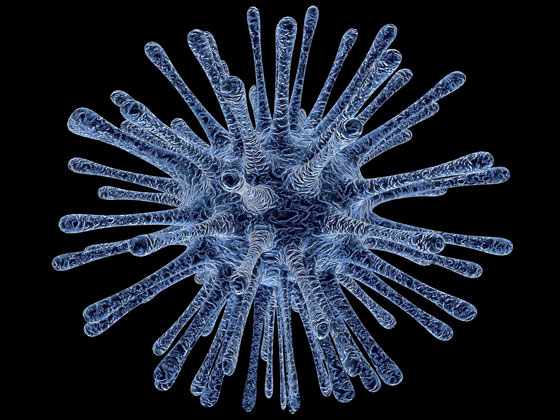New approaches are needed to control the spread of epidemic diseases, according to the developers of a new model of the way pathogens can ‘cooperate’.
Their study examined the ways two pathogens work together, finding that cooperativity between contagion processes is likely to make the spread of contagious infections more severe.
Writing in the New Journal of Physics, the researchers from Shaanxi Normal University in China, the Robert Koch Institute, and Humboldt University, Germany, present an extension of the traditional SIS (Susceptible-Infected-Susceptible) model used for modelling single contagion processes.
Lead author Dr Li Chen, from Shaanxi Normal University, said: “State-of-the-art computational models have become remarkably successful in reproducing observed patterns and predicting the trend of ongoing epidemics.”
However, most epidemic models focus on the transmission dynamics of single, pathogenic bacteria or viruses. A variety of infectious diseases exist, however, that interact either directly or indirectly e.g. by altering the susceptibility of the host with respect to infection with another pathogen.
Dr Chen said: “Co-contagion systems, therefore, are still poorly-understood. We wanted to discover what basic dynamic features you could expect in a cooperative contagion process, and the extent to which cooperativity changes the classic outbreak scenario.”
The researchers developed a model of the dynamics of two transmissible, interacting agents (labelled A and B). The model was based on the SIS model, in which host individuals are either susceptible (S) or infected (I). Susceptibles can be infected with either agent. When infected with A, for example, they can transmit A to other susceptibles.
‘Infecteds’ remain in the infectious state for a typical period, after which they recover and become susceptible again. The transmission dynamics of agents A and B are governed by agent-specific baseline reproduction numbers, which describe the dynamics of an agent in the absence of the other. The team incorporated cooperativity with two additional parameters: the cooperativity coefficients A and B that capture influence of an infection with A on the subsequent infection with B, and vice versa.
They discovered that cooperativity between contagion processes generates a variety of interesting properties that are absent in single agent dynamics. For sufficiently strong cooperativity, increasing the baseline reproduction number of one or both agents produced abrupt, discontinuous outbreak transitions and multi-stability.
In addition, novel traveling wave modes emerge when casting their model into the geometrical context, where the infection propagation recedes or even becomes frozen, apart from the traditional forward motion.
Dr Chen said: “Our model and its results can be used to understand realistic systems like pneumonia, where bacterium like Streptococcus pneumoniae interacts with viral respiratory infections like flu, and one pathogen increases the susceptibility towards the other up to 100-fold.
“Another prominent example are HIV syndemics, where the suppressed immune system of the hosts greatly increases the susceptibility towards secondary infections like hepatitis, malaria, syphilis, herpes virus, or tuberculosis. In the latter case, the cooperative interactions are mutual, as hosts with tuberculosis are found also more likely to acquire HIV.
The study suggests realistic contagions could be far more complex than the picture captured in most previous work based on single infection. Consequently, the researchers said: “These new complexities uncovered in our study suggest a need for new containment strategies to combat the epidemic spreading in some more realistic circumstances.”
